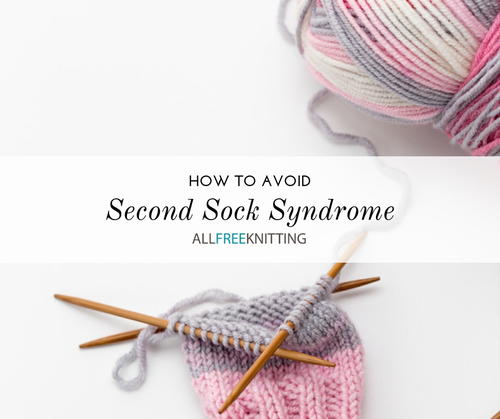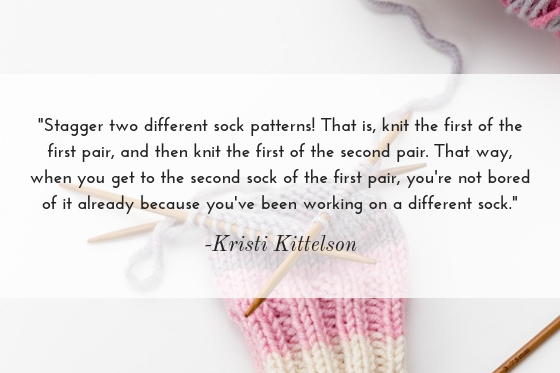How to Avoid Second Sock Syndrome
Second sock syndrome can be discouraging! Luckily we've got a few options for you.

If you're a sock knitter, you probably know exactly what second sock syndrome is. You've finished your first sock and feeling pretty good about it. You try it on and it fits well. And then you realize -- you only have one sock but two feet and zero desire to knit the whole pattern again!
It's a tough spot to be in, but you should know that you're not alone. Second sock syndrome is something that just about every knitter goes through, and as such, most experienced knitters have some tricks up their sleeves (no pun intended) for avoiding the dreaded second sock slump.
We consulted a few sock knitting experts and collected their best tips and tricks for staying motivated when it comes to sock knitting!
Solution 1: Try two-at-a-time socks (TAAT)
This is, by far, the most popular method of avoiding second sock syndrome (or SSS). Because this technique forces you two knit one round of each sock simultaneously, there's no possible way to end up with only one sock at the end. Some knitters even say that this method makes sock knitting go faster!
But not everyone does TAAT socks the same way. There are two basic approaches to this -- the magic loop version and the double knit version.
The magic loop version is a little bit easier to master, but many knitters prefer the disconnected double knit approach because one sock is literally knit inside the other one, and you get the fun reveal of pulling that second sock out of the first one like magic. If you want to try out either of these methods we've found these two super handy tutorials
Solution 2: Stagger two sock patterns
Stagger two different sock patterns! That is, knit the first of the first pair, and then knit the first of the second pair. That way, when you get to the second sock of the first pair, you're not bored of it already because you've been working on a different sock.
Alternatively, just knit another small pattern in between socks 1 and 2.

Solution 4: Use two sets of DPNs and knit two socks simultaneously
This solution might sound similar to solution 1, but they're actually quite different approaches to this plight of sock knitters. Two-at-a-time sock knitting is a particular technique of knitting socks simultaneously on the same set of ciruclar knitting needles, using the magic loop method.
With two sets of DPNs, on the other hand, you are simply knitting two, completely separate socks at the same time. Some knitters don't like to have more than one active WIP at a given time, but we think this is an exception to that.
If you use this method, you can simply switch back and forth between the two socks at whatever points you choose. For example, you could start by knitting the ribbing on one sock and then switching to the other sock to knit that ribbing. Then switch back to the next sock to knit the "leg" of the sock, and so on. This approach also lets you keep a close eye on the size of both socks, so you know they will be identical.
Solution 4: Set "mini milestones"
One tip we got from the self-described avid sock knitter, Mary Beth Temple of HookedForLifePublishing.com said that even she is a victim of second sock syndrome!
So how does a professional combat this? Well, she says she likes to set "mini milestones" throughout her patterns to make the pattern more engaging and to keep her attention longer. This could be fun cabling patterns or even just using a variegated yarn.
Solution 5: Just embrace the mis-matched socks!
Who says socks have to match? Here at AllFreeKnitting, we know the pure joy in completing a pair of socks, but we also know that pretty much no one is going to see them except you, your family, and maybe Instagram. So why not just mix and match the socks you've made?
Up Next:
More Sock Knitting Patterns (Free)
What's your favorite trick for beating SSS?
Let us know in the comments
